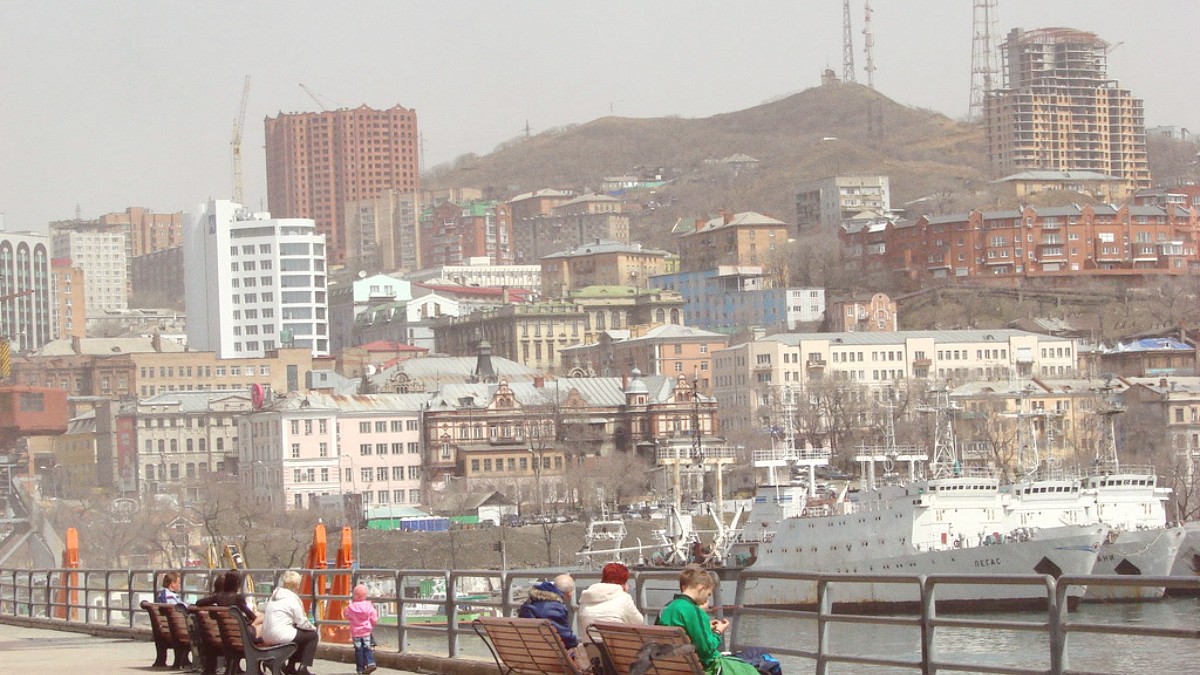
Russian Far East, Russia
Vladivostok's cuisine is a direct outcome of its geography and history. As Russia's largest port on the Pacific, it has historically been a melting pot of cultures. Russian settlers brought their traditional recipes, but the proximity to Korea, Japan, and China, along with significant immigrant communities from these countries, led to a natural culinary exchange. This fusion is not merely an addition of foreign dishes but a genuine integration, where local ingredients feature in Asian-inspired preparations, and traditional Russian dishes may present unexpected Far Eastern twists.
Seafood is a dominant feature here, mirroring the city's direct access to the rich waters of the Sea of Japan. Expect an abundance of fresh Kamchatka crab, scallops, sea urchin, shrimp, various local fish, and red caviar. Russian staples like potatoes, cabbage, beets, dill, and sour cream remain common. Asian influences appear in dishes like Pyan-se, using soy sauce, ginger, garlic, sesame oil, and various chili pastes. Fermented vegetables, like kimchi, are also popular.
In most restaurants, wait to be seated by a host or staff member. Generally polite to keep your hands above the table, but avoid placing elbows on the table.
Finishing your plate is common etiquette, especially in more traditional settings, as a sign of appreciation. Tipping 5-10% for good service is customary if a service charge is not already included in the bill.
In social settings, prepare for toasts, especially if drinking alcoholic beverages; polite to participate. Breakfast (7-10 AM), Lunch (1-3 PM - "business lunch" specials good value), Dinner (6-9 PM or later).
Vladivostok is a seafood paradise. Kamchatka Crab, scallops (often served raw), and Sea Urchin (Yuni) stand out. A variety of fresh fish from the Sea of Japan is also available.
Find at: Sportivnaya Market, specialized seafood restaurants.
Vladivostok's most iconic street food. A large, savory steamed bun filled with finely chopped cabbage, meat (usually pork or beef), and spices, often with a hint of Korean influence. Hearty and flavorful.
Find at: Street vendors and small cafes throughout the city. A must-try for any visitor.
Borscht, a classic Russian beetroot soup, often with sour cream and dill. Pelmeni (meat-filled) and Vareniki (various fillings) are Russian dumplings, comfort foods.
Find at: Most traditional Russian eateries and stolovayas.
Local tour operators or culinary schools may present classes focused on Russian, Far Eastern, or Korean-influenced cuisine, giving hands-on experience.
Guided tours sample street food, explore local markets (like Sportivnaya Market), and discover culinary gems while learning about local food traditions. Consider booking via GetYourGuide.
Upscale restaurants specializing in fresh seafood, modern Russian cuisine, and European/Asian fusion. Found in the city center with refined dishes, extensive wine lists, and polished service.
A wide variety of cafes, bistros, and casual restaurants populate the city. They present Russian, European, Korean, Japanese, and Chinese cuisines at moderate prices.
Stolovayas (Столовая): Traditional Russian cafeterias, self-service, for hearty, inexpensive meals and an authentic glimpse into Russian daily life. Street food stalls: Near major tourist spots, markets, and public transport hubs for quick snacks like Pyan-se.
A large indoor market with fresh produce, meats, dairy, and some prepared foods. A lively atmosphere and a chance to see local ingredients.
Good for experiencing local life.
Famous for its fresh seafood: Kamchatka crab, scallops, sea urchins, local fish. Some vendors even prepare seafood on the spot.
A destination for seafood enthusiasts.
Strong presence due to historical ties.
Authentic dishes available.
From casual to upscale eateries.
Delicious dishes from these cuisines.
Dining with gluten-free or other severe allergies may present a challenge due to language barriers and less general awareness among restaurant staff.
Carry translated cards explaining your specific dietary needs in Russian.
Always communicate directly with restaurant staff. Focus on simple, naturally gluten-free foods like plain grilled meats, fish, rice, and vegetables, but confirm preparation methods.
Direct communication and careful menu reading are often necessary.
Not a common tourist activity within immediate Vladivostok. Agro-tourism or visits to food producers may appear in the wider Primorsky Krai region for those interested in sustainable food practices or local produce.
Occasionally, local food festivals or culinary events take place in Vladivostok, especially during warmer months. These events celebrate local produce, seafood, and diverse culinary traditions.